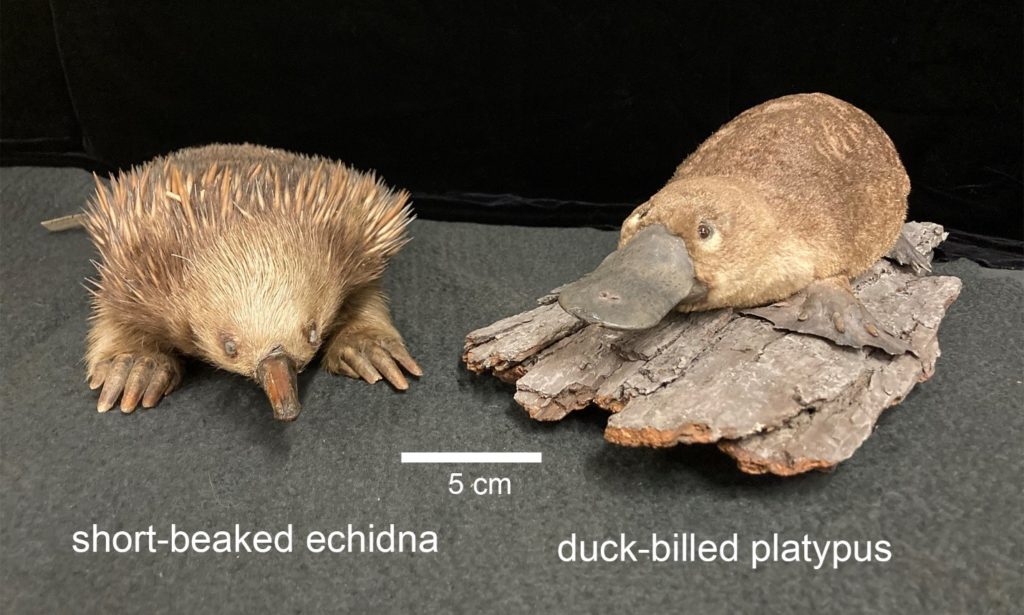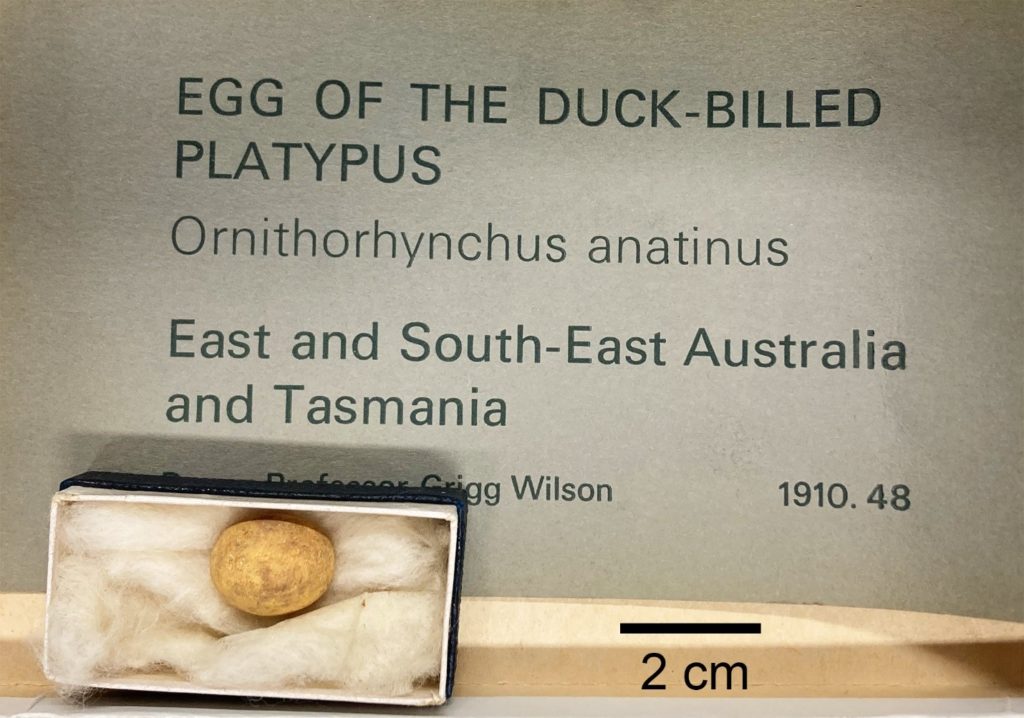by Dr. John R. Wible
Scientists recognize three major types of living mammals: placentals, marsupials, and monotremes, all of which produce milk to nourish their young. Of the 6,495 mammal species recognized in 2018 (Burgin et al., Journal of Mammalogy vol. 99), 6,111 are placentals, 379 are marsupials, and 5 are monotremes.
Placentals and marsupials are viviparous, meaning they give birth to live offspring. Marsupials, such as kangaroos, koalas, and our local Virginia opossum, give birth to very immature, embryo-like offspring that complete their development outside the womb usually attached to a nipple in a pouch. In contrast, placentals, such as dogs, cats, and humans, give birth to more developed offspring and have no pouch. Both marsupials and placentals have a placenta that nourishes the developing offspring in the womb, but this organ is more efficient in placental mammals than in marsupials.
But what about monotremes? The five species of living monotremes include the duck-billed platypus found only in eastern Australia, the short-beaked echidna found in Australia and New Guinea, and the three species of the long-beaked echidna found only in New Guinea. Echidnas are also known as spiny anteaters.

In contrast to the viviparous marsupials and placentals, monotremes are oviparous, a word that means they “give birth to eggs”. Unlike the hard-shelled eggs of birds, monotreme eggs have a leathery exterior, like those of most reptiles. The platypus has one mating season per year and produces one to three eggs with an average of two. Pregnancy lasts about 21 days and incubation of the hatched egg in a nest of wet vegetation is about 10 days. The lima bean-sized platypus newborn or puggle (or platypup to some) is embryo-like, but more advanced than a newborn joey (kangaroo). It crawls onto the mother’s belly in search of milk, which oozes from the skin surface, as monotremes don’t have nipples.
On a recent research trip to Edinburgh in the United Kingdom, I visited the mammal collection of the National Museum of Scotland. There I came across a model of the egg of a platypus, which was the inspiration for this blog. This three-quarter-inch-long egg will hatch and grow into a house cat-sized animal. Given that monotremes, most reptiles, and all birds are oviparous, the common ancestor of mammals is thought to have been an egg-layer as well. This primitive mode of birth was retained in living monotremes, but evolved into live birth in the common ancestor of placentals and marsupials.

John Wible is the Curator of Mammals at the Carnegie Museum of Natural History.
Related Content
Armadillos: Identical Quadruplets Every Time
Mesozoic Monthly: Volaticotherium
Carnegie Museum of Natural History Blog Citation Information
Blog author: Wible, John R.Publication date: June 2, 2022
